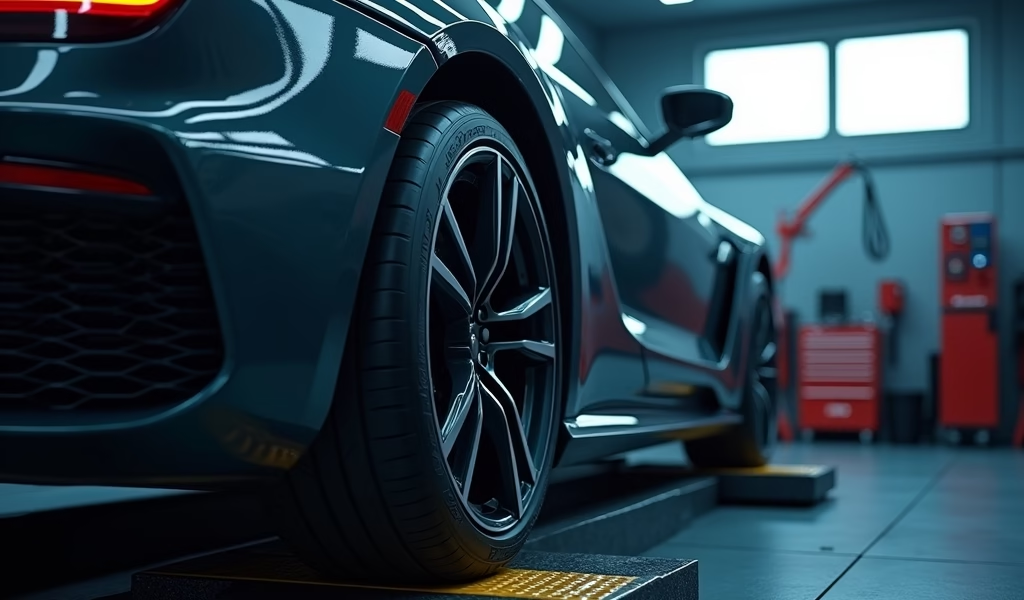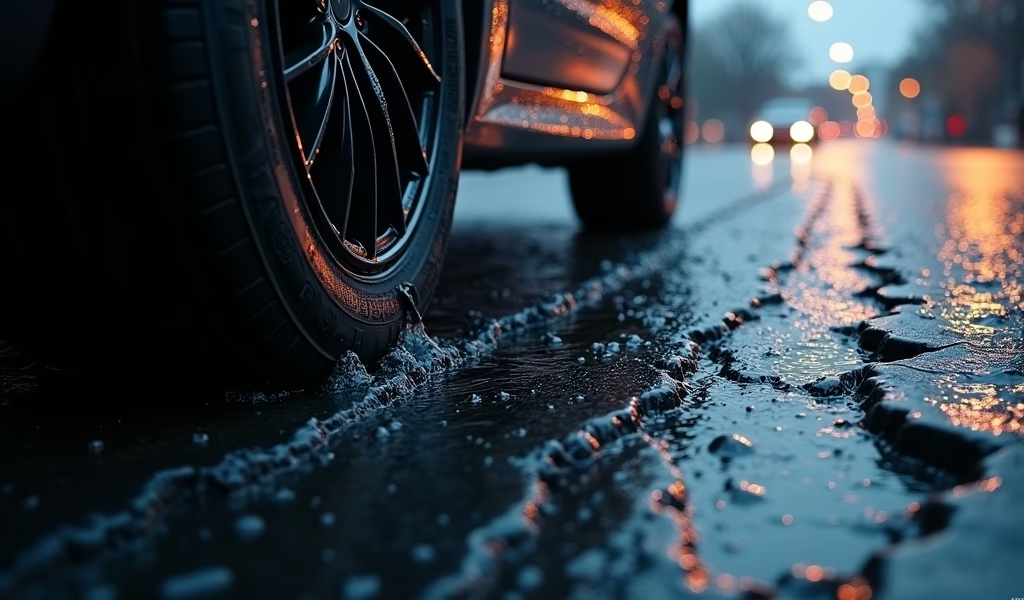Overview
This article provides five expert tips for selecting the right tire tread patterns based on weather conditions, driving style, and comfort needs, explaining how tread design affects safety, performance, and noise reduction. The guide details the differences between directional, symmetrical, and asymmetrical patterns, while emphasizing that proper pattern selection can dramatically improve vehicle handling, comfort, and safety across varying road conditions.
Table of Contents
- Understanding Tire Tread Patterns
- Why Tread Patterns Matter
- Tip 1: Choosing Patterns for Weather Conditions
- Tip 2: Balancing Performance and Comfort
- Tip 3: Understanding Directional vs. Symmetrical Patterns
- Tip 4: Selecting Patterns for Your Driving Style
- Tip 5: Considering Noise Reduction Technologies
- Conclusion
- Frequently Asked Questions
Understanding Tire Tread Patterns
Ever looked at your tires and wondered why they have those intricate designs? Tire tread pattern design isn’t just for show – it’s the result of decades of engineering aimed at keeping you safe on the road. As a mechanic with 15 years in the business, I’ve seen how the right tread pattern can make the difference between confident handling and a white-knuckle drive through a rainstorm.
Think of your tire treads as the shoes for your car. Just like how you wouldn’t wear flip-flops to run a marathon or hiking boots to a wedding, different driving conditions call for specialized tread patterns. The grooves, blocks, and sipes (those tiny slits in the tread blocks) work together to channel water away, grip snow, or hold the road on sun-baked asphalt.
In 2024, tire tread pattern design has evolved into a science that balances grip, noise, comfort, and fuel efficiency. The right pattern can extend your tire life, improve your gas mileage, and most importantly, keep you safer on the road. Let’s dive into what makes these patterns work and how to choose the right one for your vehicle and driving needs.
Why Tread Patterns Matter
Imagine trying to walk across a wet floor in completely smooth-soled shoes. That helpless sliding feeling? That’s what driving on bald tires feels like, only at 60 mph. Tire tread patterns create escape routes for water, preventing the dangerous phenomenon known as hydroplaning, where your tires actually float above the road surface.
But the importance goes beyond just wet conditions. According to a study by the National Highway Traffic Safety Administration, proper tire maintenance – including appropriate tread patterns for conditions – could prevent thousands of accidents annually. Your tire’s speed rating symbol works hand-in-hand with tread design to determine performance limits.
The right tread pattern affects nearly every aspect of your driving experience:
- Traction on wet, dry, snowy, or icy roads
- Braking distance in emergency situations
- Handling around corners
- Tire longevity and even wear
- Road noise and comfort
- Fuel economy
I’ve had countless customers come in complaining about road noise or poor handling, only to discover they’ve chosen tires with patterns completely unsuited for their driving needs. Let’s explore how to avoid those mistakes with these five proven tips for understanding tire tread pattern design.

Tip 1: Choosing Patterns for Weather Conditions
When it comes to tire tread pattern design, Mother Nature should be your first consideration. Your local climate will dramatically impact which pattern serves you best. Let me break this down by weather condition:
Wet Weather Performers
If you live in Seattle, Portland, or anywhere else famous for rainfall, look for tires with wide, straight grooves running around the circumference (called “circumferential grooves”). These act like miniature rivers, channeling water away from the tire’s contact patch. The best wet-weather tires can disperse several gallons of water per second!
You’ll also want plenty of “lateral grooves” – the channels that run across the tire width – which help fling water out from under the tire. Together, these create a network that keeps your rubber actually touching the road, not floating on a thin layer of water.
Snow and Ice Warriors
For snowy climates, the game changes completely. Here, you want a more aggressive pattern with lots of “biting edges” – those tiny slits called sipes that act like hundreds of tiny snow claws. These sipes open up as they roll onto the road surface, grab snow (snow sticks to snow better than it sticks to rubber), and provide crucial traction.
Winter tires also typically have wider spacing between tread blocks, allowing snow to pack into the tread pattern. This might sound counterintuitive, but that snow-to-snow contact creates amazing grip in winter conditions. Many modern winter tires also contain specialized rubber compounds that stay pliable in freezing temperatures.
Dry Climate Champions
If you’re blessed with year-round sunshine, your priorities shift to maximizing the rubber-to-road contact. Performance tires for dry conditions often have fewer grooves and larger tread blocks to increase the contact patch. This improves cornering grip and braking performance when the roads are dry.
However, even in dry climates, occasional rain happens. That’s why even performance summer tires maintain some water evacuation channels. The compromise leans toward dry performance while maintaining acceptable wet-weather capability.
Remember that your tire’s load capacity also interacts with tread design to determine overall performance. A properly matched combination ensures safety in all conditions.
Tip 2: Balancing Performance and Comfort
One of the most common questions I get at the shop goes something like this: “Can I get tires that corner like they’re on rails but still give a buttery-smooth ride?” The honest answer is that tire tread pattern design involves trade-offs. Understanding these trade-offs helps you prioritize what matters most for your driving experience.
Performance-oriented patterns typically feature larger, stiffer tread blocks with fewer grooves. This design creates a stable contact patch that responds quickly to steering inputs and offers precise handling. The downside? Those same rigid blocks transmit more road vibration and noise directly to your cabin.
On the comfort end of the spectrum, you’ll find patterns with more numerous, smaller blocks separated by additional grooves. These smaller blocks can flex independently, absorbing minor road imperfections before they reach your suspension. The extra grooves also help break up sound waves, reducing the highway drone that can make long trips exhausting.
The sweet spot for most drivers lies somewhere in the middle. Modern tire technology has narrowed this gap significantly, with premium tires offering impressive performance while maintaining reasonable comfort. According to Consumer Reports’ tire testing, many all-season touring tires now achieve comfort scores close to luxury-oriented tires while maintaining respectable performance metrics.
Here’s my practical advice: If your commute includes rough roads or you frequently take long highway trips, prioritize comfort elements in your tire tread pattern design. Look for tires with variable pitch tread patterns (where blocks are slightly different sizes) to reduce noise, and more siping to absorb small impacts.
If you enjoy spirited driving or frequently travel winding roads, tilt toward performance patterns with larger, more stable tread blocks. You’ll appreciate the responsive feel, even if it means a bit more road noise.
Tip 3: Understanding Directional vs. Symmetrical Patterns
Not all tire tread patterns are created equal – or even the same on both sides! Understanding the different pattern types can save you headaches and enhance your vehicle’s performance. Let’s demystify the main design categories.
Directional Patterns
You can spot these right away by their distinctive “V” pattern pointing in the direction of rotation. Think of them as arrowheads cutting through water. These tires are designed to rotate in one direction only and are usually marked with a rotation arrow on the sidewall.
Directional tread excels at water evacuation, making them fantastic choices for wet climates. The V-shaped channels work like scoops, efficiently channeling water from the center of the tire outward as it rolls. This design significantly reduces hydroplaning risk at highway speeds.
The catch? Rotation limitations. You can only rotate these front-to-back (not side-to-side), which can lead to uneven wear patterns, especially if your vehicle has alignment issues. They typically cost more to maintain long-term because of these rotation constraints.
Symmetrical Patterns
These are the most common tire tread pattern designs, featuring identical patterns across the entire tread face. The inner and outer halves mirror each other, allowing these tires to be mounted in any direction and rotated to any position on the vehicle.
The primary advantages here are versatility and longevity. The ability to rotate these tires to any position means wear is distributed more evenly, often extending tire life. They’re also typically the most affordable option upfront.
The trade-off comes in specialized performance. While decent all-around performers, symmetrical patterns rarely excel in extreme conditions like heavy rain or snow compared to patterns designed specifically for those challenges.
Asymmetrical Patterns
These hybrid designs represent the best of both worlds for many drivers. The outer edge typically features larger, stiffer tread blocks for cornering stability, while the inner edge prioritizes water evacuation and winter traction.
You’ll notice these tires have different patterns on the inner and outer sides, with sidewall markings indicating which side faces outward. Despite this, they can still be rotated in multiple patterns, offering more flexibility than directional designs.
Many premium all-season and performance tires use asymmetrical patterns to deliver balanced capabilities. They cost more initially but often deliver better overall performance without sacrificing rotation options.
When choosing between these pattern types, consider your climate, driving style, and how diligent you’ll be about regular rotations. For many drivers, asymmetrical patterns offer the best balance, but your specific needs might point toward one of the other designs.

Tip 4: Selecting Patterns for Your Driving Style
Your right foot tells a story – and your tire tread pattern design should complement that narrative. Whether you’re a highway cruiser, an enthusiastic corner-carver, or an off-road explorer, matching your tread pattern to your driving style dramatically improves both safety and satisfaction.
Let me paint a picture from my years in the garage: I once had a customer bring in his luxury sedan complaining about excessive road noise and a harsh ride. He’d installed aggressive all-terrain tires better suited for a Jeep heading to Moab than his executive commuter car. The right pattern for the wrong application created months of unnecessary discomfort.
For the Highway Commuter
If your vehicle spends most of its life eating up highway miles, tire longevity and comfort should top your priority list. Look for tire tread patterns with these characteristics:
- Continuous ribs (unbroken bands of tread) around the tire’s circumference for stability and even wear
- Variable pitch patterns to reduce harmonic drone at highway speeds
- Moderate siping to maintain wet traction without excessive block movement
These patterns minimize the rolling resistance that kills fuel economy while providing the quiet, stable ride that makes long commutes bearable. Many “grand touring” or “highway” designated tires fit this profile perfectly.
For the Performance Enthusiast
If you enjoy spirited drives on winding roads or perhaps the occasional track day, your tire tread needs shift dramatically. Prioritize patterns featuring:
- Larger, more rigid tread blocks on the outer shoulders for cornering stability
- Less aggressive siping to prevent tread block squirm during hard cornering
- Continuous center ribs for responsive steering and braking
Summer performance tires typically feature these characteristics, sacrificing some comfort and wet-weather performance for maximum grip and precision. The difference in handling compared to standard all-season tires can be night and day.
For the All-Weather Warrior
If you face varied conditions but want to avoid seasonal tire swaps, look for these pattern elements:
- Moderate block sizes with substantial siping for winter traction
- Wide circumferential grooves for rain evacuation
- Interlocking tread blocks that provide stability while allowing flexibility in changing conditions
Modern all-weather tires (distinct from all-season) deliver impressive year-round performance for drivers in variable climates. They won’t match specialized tires at the extremes but offer convenience and safety across a broader range of conditions.
Tip 5: Considering Noise Reduction Technologies
Nothing ruins a peaceful drive like the persistent drone of tire noise. In my experience, tire roar is among the top complaints that bring customers back after a new tire purchase. Modern tire tread pattern design incorporates sophisticated noise-reduction technologies that were once reserved only for premium luxury vehicles.
The physics of tire noise is fascinating: As your tires roll, air gets compressed between tread blocks and the road, creating sound waves as it’s expelled. When all your tread blocks hit the road at the same frequency, they create harmonic patterns that amplify into the monotonous drone we associate with highway driving.
Variable Pitch Technology
The most effective noise-fighting innovation in tire tread pattern design is variable pitch technology. Rather than identical tread blocks placed at regular intervals, these patterns use blocks of slightly different sizes arranged in specific sequences. This variation breaks up the sound wave patterns, preventing them from amplifying each other.
Picture a piano – when you hit a single key repeatedly, you get a predictable, potentially annoying sound. Variable pitch is like playing a complex chord progression instead. The sound energy gets dispersed across different frequencies, making it less perceptible to human ears.
Sound-Absorbing Materials
Some premium tire manufacturers now incorporate sound-absorbing foam layers inside the tire cavity. Brands like Continental with their “ContiSilent” technology and Michelin’s “Acoustic Technology” add specialized foam that absorbs vibrations before they can become audible noise.
These technologies can reduce cabin noise by 2-3 decibels – a difference that sounds small on paper but makes long drives noticeably less fatiguing. As Tire Rack’s testing has shown, this reduction can be equivalent to the difference between economy and luxury vehicles in interior noise levels.
Optimized Tread Sequencing
Beyond just varying the sizes, advanced computer modeling now allows manufacturers to determine precise sequences of tread blocks that minimize noise at different speeds. These patterns might look random to the naked eye, but they’re carefully calculated to provide both performance and acoustic benefits.
If road noise is a particular concern for you, look for tires specifically marketing noise reduction features. Many tire manufacturers now include noise ratings in their specifications, often measured in decibels. Lower numbers mean quieter operation.
Remember that proper inflation also plays a crucial role in tire noise. Underinflated tires flex more, creating additional noise and uneven wear patterns that compound the problem over time. Check your pressures monthly for optimal acoustic performance.
Conclusion
Tire tread pattern design might seem like a minor detail in the grand scheme of vehicle ownership, but as we’ve explored, these intricate patterns are engineering marvels that directly impact your safety, comfort, and driving enjoyment. The right pattern can make a Honda feel like a Lexus in terms of ride quality, or give your family sedan surprising capability in challenging conditions.
After 15 years helping customers find their perfect tire match, I’ve learned that there’s no one-size-fits-all solution. The ideal tire tread pattern depends on your specific vehicle, driving conditions, personal preferences, and budget. By understanding the principles we’ve discussed – from weather adaptation to noise reduction technologies – you’re now equipped to make informed choices rather than just accepting whatever’s on sale.
Remember that even the perfect tire pattern requires proper maintenance to perform as designed. Regular rotation, alignment checks, and inflation monitoring will ensure your tires wear evenly and deliver their full potential performance throughout their lifespan.
The next time you’re in the market for new tires, take a moment to consider the patterns beneath your vehicle. Those seemingly random grooves and blocks are actually sophisticated tools designed to keep you safely connected to the road in all conditions. Choose wisely, and you’ll enjoy thousands of miles of safer, more comfortable driving.
Frequently Asked Questions
How often should I replace my tires based on tread pattern wear?
Replace tires when tread depth reaches 2/32 of an inch (easily checked with a penny test). Most all-season tires last 40,000-60,000 miles depending on driving conditions and maintenance.
Can I mix different tread patterns on my vehicle?
It’s strongly recommended to use identical tread patterns on all four wheels, especially on the same axle. Different patterns create handling imbalances that can be dangerous in emergency maneuvers.
Do more aggressive tread patterns always mean better performance?
No, aggressive patterns excel in specific conditions like off-road or snow but often create more noise and reduce fuel economy. The best pattern matches your actual driving conditions rather than looking aggressive.
How do tire tread patterns affect fuel economy?
More aggressive patterns with larger blocks and deeper grooves create higher rolling resistance, reducing fuel economy by 1-3%. Low rolling resistance designs feature shallower depths and more rigid tread blocks.
Are tire tread patterns different for electric vehicles?
Yes, many EV-specific tires feature patterns optimized for lower rolling resistance and reduced noise. These designs help maximize range while compensating for the lack of engine noise that would otherwise mask tire sound.


Pingback: Tire Contact Patch Pressure: Best 5 Tips - knowsyourcar.com